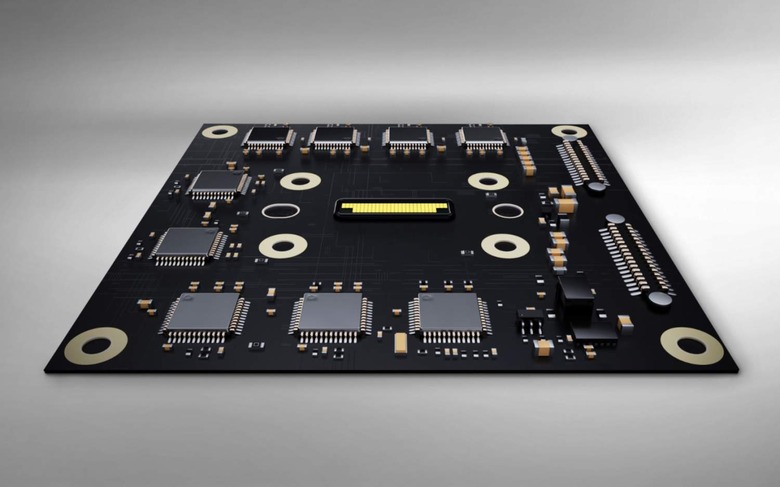Samsung's New Smart Headlamp Tech Just Leaves Me Angrier
You might not associate Samsung with car parts, but the company has revealed new smart LED headlamp clusters that could bring active lights to a much broader range of vehicles – though for the moment it looks like American drivers will miss out. The Samsung PixCell LEDs aren't just one light source but in fact a whole cluster of more than 100 ultra-small segments, built into a single LED chip.
Those segments can be individually controlled, such as by an adaptive driving beam (ADB) system. For instance, if the system spots an oncoming vehicle at night, while you have your high-beams switched on, it could selectively occlude the parts of the headlamps which are directed at that vehicle.
The result would be avoiding glare for that car, but continued visibility around it for you. Alternatively, headlamps using the PixCell LEDs could focus light according to ambient conditions, such as when driving in fog or heavy rain, to maximize how much of the road can be seen.

Samsung isn't the first company to offer smart headlamp LEDs like this, but its method is a little different. The PixCell system combines 100+ tiny segments – each separated by a silicon wall – with each acting like a pixel. The light-emitting area is only 1/16th of the size of a conventional discrete LED module used in current ADB systems, Samsung says. That means the overall light assembly could be as much as 50-percent smaller without impairing functionality.
That's great, assuming you live in a country where these sort of headlamps are actually permitted. It's a problem US drivers find themselves facing, where automakers have been forced to disable the smart lighting features on cars for sale in America. Currently, regulations in the US don't allow this sort of selective lighting on vehicles, and while car companies and safety organizations have pushed for changes, there's no telling when – or if – that will happen.
It's frustrating, because it leaves American drivers missing out on some of the biggest advances in tech we've seen in automotive recently. Audi's digital matrix LED system, for example, is offered elsewhere in the world on vehicles like the e-tron SUV; the same EV in the US, however, doesn't offer that feature. Mercedes' Digital Light – as featured on the new flagship EQS all-electric luxury sedan – is similarly blocked by out-of-date rules. Both systems, when functional, can even do things like project graphics on the road to better communicate vehicle behaviors with pedestrians and other road users; in the US, about the smartest thing they can manage is automatically flip between high- and low-beam settings.
Polestar found itself in the same situation with the recently-launched Polestar 2. The EV has Pixel LED headlamps, made up of 84 individual LEDs within each light, and which can do things like selectively shade the brightness in patches so as not to dazzle oncoming traffic.
While US-spec cars are fitted with the Pixel LED hardware, the advanced ADB features aren't enabled. Polestar has said that it could do that with an OTA software update in future, should the local regulations change, though again it can't say when that might happen, if it ever does. In fact, owners of the Polestar 2 could have the EV and never get to use the full extent of the features it's capable of.
Samsung says there are still good reasons to use the PixCell LED system, even if ADB isn't legally allowed in every region. For a start, it supports different configuration of the same hardware to suit varying light regulations and requirements. "Based on a single standard headlamp design," the company points out, "lamp makers can customize light output to suit varying design needs and enjoy reduced lead time for development, production, supply and time-to-market."
With some software architecture foresight by automakers, then, smart LED lights like these could one day be upgraded with a firmware patch to enable the more advanced functionality that the hardware is capable of. For that to happen, though, we'll need US road safety regulators to get up to speed with the cutting-edge of vehicle tech, and that's a process which is frustratingly slow in comparison.
